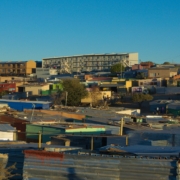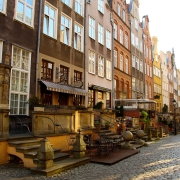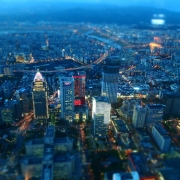How did Indonesia build its economy?
Overall economic trend of Indonesia
From independence to 1970s, the Indonesian government was pre-occupied with its political development. Also, there was much emphasis on agriculture, given its substantial natural endowments. Although the country encountered several setbacks, astute government intervention resulted in the rapid economic growth from 1970s to 1980s due to the continued emphasis on industrialization. Nevertheless, given its large geographical size, the Indonesian economy has a massive potential for economic growth.
Topic of Study [For H2 History Students]:
Paper 2: Economic Development after Independence
Section B: Essay Writing
Theme II Chapter 1: Paths to Economic Development
1957 to 1965: ‘Guided Democracy’ [Soekarno]
Following the harsh and disruptive colonial rule and World War Two, the Indonesian government, under Soekarno’s leadership, pursuit economic nationalism to restore state control of key economic sectors. In 1957, the seizure of foreign-owned assets was carried out for state consolidation and re-allocation. For instance, the ‘Peraturan Presiden Nomor 10 tahun 1959‘ (Government Regulation 10) disallowed foreigners from conducting businesses in specific areas. At the same time, the regulation forced the transfer of business ownership to local citizens.
In addition, under the guidance of the Bappenas [Badan Perencanaan Pembangunan Nasional] (National Planning Council), the Indonesian government focused on national development. The plan involved an estimated spending of $30 billion rupiah on an annual basis. Land reform was also conducted to nurture the development of the agricultural sector, as observed by the Basic Agrarian Law (Peraturan Dasar Pokok-Pokok Agraria).
1965 to 1997: ‘New Order’ [Suharto]
After the sudden political transition, Suharto led a major economic transformation that resulted in the rapid modernisation of Indonesia. Together with his team of Western-educated technocrats, also known as the ‘Berkeley Mafia‘, Suharto introduced liberal economic policies.
The BULOG [Badan Urusan Logistik] (National Logistics Body) was established in 1966 for price stabilization in the agriculture sector. To protect the interests of the locals, the government introduce price control measures to reduce inflationary pressures for crops, such as rice.
At the same time, the BIMAS (Mass Guidance Programme) was implemented in 1969 to nurture the rice industry through the provision of access to foreign technology. Also, Suharto capitalized on the Green Revolution by providing disease-resistant and high-yielding varieties.
As a result, Indonesia flourished tremendously from its successful efforts in raising rice production. In fact, agriculture contributed to nearly one-third of the country’s Gross Domestic Product (GDP).
Another critical aspect of Indonesia’s rapid economic growth can be traced to its emphasis on export-oriented industrialization (EOI). It began with the provision of incentives to attract foreign investment, such as the New Investment Law of 1967, which guaranteed no corporate tax for specific projects.
Additionally, financial liberalization was pursued in the 1980s. For example, the government allowed the deregulation of money markets, as evidenced by the increase in number of private local banks from 63 in 1988 to 165 in 1995. By 1990, the privatization of the Jakarta Stock Exchange promoted investment activities. These changes can be explained by the easing of licensing regulations for foreign banks.
Hence, we can observe that the 1980s and 1990s were a notable period in which the government played a secondary role, thus allowing the private sectors to guide the economic development of Indonesia.
Furthermore, the government tapped on the economic expertise and domestic capital of its Chinese-dominated private businesses to flourish the economy. By 1996, a group of domestic conglomerates became the key pillar of the economy, such as the Salim Group (e.g. Indomie!) and Astra Group.
What can we learn from this case study?
Consider the following questions to understand this country-specific case study:
– How important was the government in shaping the economic development on Indonesia after independence? [to be discussed in class]
After analyzing this case study, review your knowledge comprehension by answering JC History essay questions. Alternatively, you can sign up for our JC History Tuition and find out how you can organise your answers effectively.
The H2 and H1 History Tuition feature online discussion and writing practices to enhance your knowledge application skills. Get useful study notes and clarify your doubts on the subject with the tutor. You can also follow our Telegram Channel to get useful updates.
We have other JC tuition classes, such as JC Math Tuition and JC Chemistry Tuition. For Secondary Tuition, we provide Secondary English Tuition, Secondary Math tuition, Secondary Chemistry Tuition, Social Studies Tuition, Geography, History Tuition and Secondary Economics Tuition. For Primary Tuition, we have Primary English, Math and Science Tuition. Call 9658 5789 to find out more.











